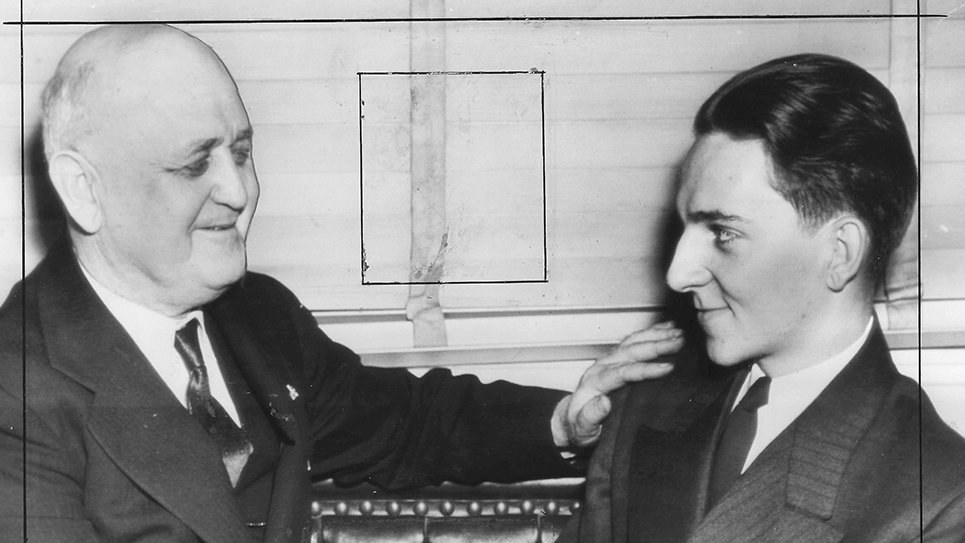By Dan Andrews
Over the years, the neighborhood community watch program has given people the ability to coordinate a proactive preventative response to a potential crime being committed in their neighborhood. The groups would do this by manually gathering information, cooperating with local law enforcement, and holding community meetings in a central location for members to attend.
Recent advances in technology are now allowing communities to strengthen the watch programs. The Knox County Sheriff’s Office even endorses the two digital media products Nextdoor and Raidsonline according to Katy Davis, who specializes in crime prevention for the Sheriff’s Department.
Davis went to say, “Nextdoor is also endorsed by The National Association of Town Watch. And, Capt. Hubbs coordinates the KCSO Raidsonline.”
Here is a closer look at some of the tools that communities in Knox County are using to stay safe.
Applications
Nextdoor creates a hyperlocal social media platform for people within a specific community, for example, a subdivision’s homeowner association. The company requires verification of address via a credit card which does not incur a charge, or via phone or postcard.
Nextdoor’s mission is to use the power of technology to build stronger and safer neighborhoods. The website enables individuals to alert each other when break-ins or theft occurs.
The company’s website highlights the following uses for the technology.
- Quickly get the word out about a break-in
- Organize a Neighborhood Watch Group
- Track down a trustworthy babysitter
- Find out who does the best paint job in town
- Ask for help keeping an eye out for a lost dog
- Find a new home for an outgrown bike
- Finally call that nice man down the street by his first name
Local law enforcement crime data is continually being uploaded to RAIDS Online. Members of the community then have the option to view the data either via a map or grid format.
The ICE BlackBox Neighborhood Watch NOW Portal is a web-based application that maps recorded incidents and can be monitored using any smartphone, laptop or desktop computer. When someone records an incident using the ICE BlackBox app, a Portal Icon is set on the Portal’s Map to indicate the incident’s precise GPS location. The Portal Icon can be clicked to view the incident recording as well as information about the reporter.
There are two versions of the ICE BlackBox Portal – the NSA (National Sheriffs’ Association) ICE Portal for Law Enforcement and the Neighborhood Watch NOW Portal for citizens. Both can view all recordings in the GPS Radius assigned to that Neighborhood or Jurisdiction.
The NSA ICE Portal can be used by law enforcement or security personnel to determine the gravity of the incident and send a unit to the location to de-escalate if necessary. In many cases, participating law enforcement deputies/officers can be dispatched while you are still talking to the 911 operator.
In a major emergency such as an earthquake, flood, hurricane or other natural disasters, ICE BlackBox Portal can be instrumental in finding people who need help. Imagine having icons exactly where each person needs assistance. Also, with the aid of video recordings, emergency personnel can respond to each request based on the severity of the incident. Imagine first responders arriving on the scene 70-80% faster to help you…that’s the power of this technology.
The Neighborhood Watch NOW Portal is a free tool used by citizens to monitor suspicious persons and criminal acts recorded by their neighbors within their neighborhood. Anyone can create a Neighborhood Watch group using www.NNW.org best practices.
Other options
Video surveillance is another option. However, the proper method of using surveillance technology differs among experts. Some research suggests that individuals should install surveillance cameras on their personal property while others note that a community surveillance program set up via a master plan might provide better security. However, the issue of privacy rights might become a major factor.
The Focus spoke with home security expert John Knox, President of Knox Integrated Systems and Immediate Past President of the Electronic Security Association. He gave this advice: “CCTV cameras can be placed in strategic areas of the home or neighborhood that monitor and record activity. These cameras can work along with an electronic security system or as a standalone system. Activity can be view remotely via smart phones or computers. Also alarm activity can be pushed to the homeowner’s smart device. Consult a licensed security professional or legal professional on where these devices can be legally installed. Prices for these systems have fallen over the past years due to technology.”
Another option that tries to address the concerns above is Ring. When a person comes to your door, your cell phone immediately alerts you. Then you can have a conversation with whoever is at the door where ever you may be. The device has a two-way microphone and a video camera. It is also a doorbell. So you can see who is at the door, but they cannot see you. You can communicate crystal clear with them. Once the person leaves your residence, you can use your Nextdoor app to alert the community. One employee at the Focus currently has this product in use at their house. So far for them it works great.
Another tool that is starting to gain attention and is very controversial is the use of drones. Recently, a Memphis TV station filed an investigative report involving an individual with a drone that uses FLIR (Foward Looking Infra Red.) With drones becoming lower in price and higher in technology, this is one area of interest to continue monitoring.
FLIR is not only available on drones; the product now has an add-on capability that allows smartphones to see images from heat in the dark. This technology can come in especially handy for “Silver Alerts.” As a growing portion of the population continues to age, more elderly adults are wondering off with dementia. According to the Alzheimer’s Association, three out of five people with the disease will wander off. So with an aging population, this tool might come in handy. Also, this tool can be instrumental in finding lost dogs, cats, or children that fall asleep in places such as corn fields or under decks playing “hide and seek.” Currently, the price for this device is $199.
In conclusion, information is power. With new emerging technology ranging from apps, to maps, to video doorbells, digital neighborhood watch organizations now have more information and better options to protect their communities than ever before.






